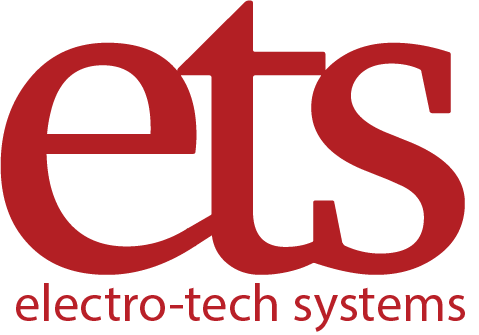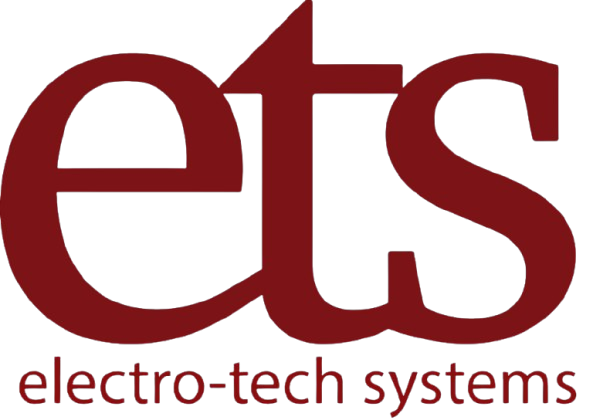Environmental Control Systems Explained: Key Features, Functions, and Lab Applications
An environmental control system refers to technology used to precisely regulate internal conditions—especially temperature and humidity—within a confined space such as a laboratory chamber, glove box, or controlled-atmosphere enclosure. In research, manufacturing, and testing environments, maintaining tight control over these parameters is essential for reproducible outcomes, sample integrity, and sensitive process stability. Electro-Tech Systems (ETS) is a leading provider of such systems, offering microprocessor-based control of humidity (from very low to very high relative humidity) and temperature (across a wide range) for a variety of lab applications.
Key Features of Environmental Control Systems
Environmental control systems from ETS are distinguished by several core features:
- Wide Environmental Range
- Systems can precisely regulate humidity from very low (e.g., < 5% RH) to very high levels (> 95% RH), depending on the configuration.
- Temperature control spans a broad band, with systems capable of operating from sub-ambient (e.g., −40 °C) up to moderately high temperatures (e.g., +60 °C).
- Microprocessor-Based Control
- These systems use microprocessors to manage set-points, monitor sensors, and enact control logic, offering high precision.
- This architecture also enables advanced control strategies like PID (proportional-integral-derivative) control to minimize overshoot and maintain stability.
- Modular Conditioning Options
- The system supports separate functional modules: dehumidification, humidification, heating, and cooling.
- For dehumidification, both dry-gas purging and desiccant-based approaches are possible.
- Humidification typically uses ultrasonic humidifiers for efficient moisture generation.
- Cooling can be achieved via thermoelectric or refrigeration-based systems.
- Precise Controllers
- Dedicated humidity and temperature controllers from ETS allow users to set, monitor, and log environmental parameters.
- Advanced controllers offer programmable logic, multi-loop control, and data-logging functionality, which is critical for process traceability.
- Customizability
- Systems can be tailored: ETS offers standard chambers as well as custom enclosures to suit particular size, shape, or performance needs.
- Power options (115 VAC / 230 VAC) and other custom interfaces are supported, making integration flexible.
How Environmental Control Systems Work?
To understand how environmental control systems operate in practice, here are the primary functional mechanisms:
- Sensing & Feedback
Environmental sensors within the system constantly monitor temperature and humidity. These sensors feed data to the controller, which compares real-time values against target set-points. - Humidification
When the measured humidity is below the target, the humidifier module generates moisture, often via ultrasonic technology. This water vapor is introduced into the controlled space until the desired RH is reached. - Dehumidification
If humidity is above the set-point, the system can reduce moisture via desiccant-based drying or by purging with dry gas. - Heating & Cooling
Temperature adjustments are achieved using heating elements or cooling modules. Cooling may use thermoelectric or refrigeration systems, depending on design. - Control Logic & Stability
The microprocessor controller manages all these functions seamlessly, adjusting outputs dynamically (e.g., turning the humidifier on/off, regulating the gas purge, controlling the heater/cooler) to maintain stable conditions. - Data Logging & Alarms
Many controllers support data logging of temperature and humidity over time. Alarms can be configured to notify users if parameters drift outside acceptable limits, ensuring the integrity of experiments or storage.
Applications in Laboratory & Industrial Settings
Environmental control systems have a wide variety of laboratory and industrial applications. Some key use cases include:
- R&D Laboratories
Researchers require stable and repeatable conditions to run experiments, test materials, and develop new products. Maintaining tight control over temperature and humidity ensures consistency and reliability in results. - Pharmaceutical / Biomedical Applications
Controlled environments are critical for drug formulation, stability testing, and biological sample storage. Even small variations in humidity can affect chemical stability and biological behavior. - Electronics & Semiconductor Manufacturing
Moisture can impair electronic components through corrosion or electrostatic discharge. An environmental control system helps protect sensitive assemblies by regulating humidity and temperature precisely. - Quality Control & Calibration
Many testing protocols (e.g., calibration labs) demand carefully controlled environmental conditions. These systems support testing, weighing, and calibration tasks by providing a stable chamber environment. - Storage & Aging Studies
Environmental control systems are used to simulate aging or stress conditions (e.g., high humidity, elevated temperature) in packaging, material, or drug stability testing. - Custom / Specialized Enclosures
Whether it’s glove boxes, dry boxes, or desiccator cabinets, these systems can be integrated to convert standard enclosures into precisely controlled environments.
Benefits of Implementing These Systems
Implementing a high-precision environmental control system provides several advantages for labs and industrial users:
- Reproducibility & Quality: By maintaining stable environmental conditions, labs can ensure that experiments, tests, or production processes are more consistent and reliable.
- Material Integrity: Sensitive materials (e.g., hygroscopic powders, electronics) are protected from degradation, condensation, or electrostatic issues.
- Process Efficiency: Accurate control speeds up ramping between conditions and minimizes overshoot, reducing waste and optimizing cycle times.
- Regulatory Compliance: With the ability to log and alarm, these systems support documentation for GMP, GLP, ISO, or other regulatory standards.
- Flexibility: Modular design lets users adapt the system to different chamber sizes, environmental ranges, and specific lab requirements.
- Cost Savings Over Time: While the initial investment may be significant, better environmental management can reduce sample failures, rework, and maintenance costs.
Conclusion
Environmental control systems are a foundational technology for laboratories and controlled-environment facilities that demand rigorous regulation of temperature and humidity. By combining sophisticated sensing, microprocessor control, and modular conditioning (humidification, dehumidification, heating, cooling), these systems deliver the stability and precision needed for research, manufacturing, and quality assurance.
Whether it’s testing devices in a cleanroom, conducting humidity-sensitive chemical research, or storing critical biological samples, implementing a reliable environmental control system ensures both reproducibility and protection. Organizations investing in such systems—especially from trusted providers—gain a strategic advantage in maintaining high-quality, tightly controlled environments.

